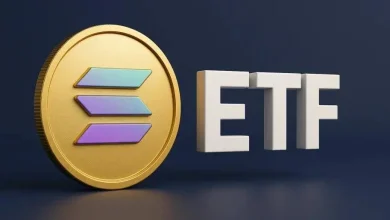How to Use Your Staked ETH (stETH) as Collateral in DeFi


ETH staking is one of the most popular ways for investors to earn passive income in the industry. When stakers lock up ETH to secure the network, they receive rewards in return. However, the issue with traditional staking is that when your ETH is locked, it cannot be used anywhere till the staking period ends.
This point is where staked ETH or stETH comes in. stETH is a liquid staking token issued by Lido. It represents your staked ETH with the rewards it generates. stETH can move unhindered across the DeFi ecosystem. Hence, you can hold it, trade it, or use it as collateral to borrow other assets without forfeiting staking rewards.
In this post, we’ve explained how Staked ETH works and how to use it as collateral for maximizing your ETH holdings.
Key Takeaways
- With stETH, you’ll continue to earn rewards while using your ETH in DeFi.
- Risks are real, so be cautious of depegging, liquidation, and smart contract issues.
- begin small, borrow less than the maximum, and monitor your health factor.
What is stETH?
stETH stands for staked ETH. If you stake your ETH through Lido rather than locking your coins and not being able to use them, you’ll get stETH in return.
stETH is like a receipt showing that you staked your ETH. However, it functions as more than a receipt because it grows in value. It comprises your original ETH and your earned staking rewards.
Additionally, stETH is liquid, unlike locked ETH. You can move, trade, or use it across diverse . Therefore, while your ETH is securing the ETH network, your stETH allows you to keep playing in DeFi, which involves lending, borrowing, or earning extra yield.
Why Use stETH as Collateral?
If you use stETH as collateral, it’s like getting the best experience of both worlds. You’ll get the benefits of staking and also unlock new opportunities in DeFi. Here are some reasons to use stETH as collateral in DeFi.
1. Earn staking rewards
When you stake ETH the conventional way, your coins are locked up, preventing you from moving them around. However, you don’t have that difficulty with stETH. The token reflects your staking rewards, increasing its value over time. When you use your Staked ETH as collateral, the rewards continue, as you’ll still benefit from ETH staking in the background.
2. Borrow money without tradeing ETH
Liquidity is one of the common issues that crypto holders face. For instance, imagine you’ve staked some ETH but you suddenly need money to pay bills, trade, or invest. Typically, you’ll be left with the option of tradeing your ETH, which means you’ll lose exposure to the asset and its future growth. However, you don’t need to deal with stETH.
You can lock your stETH into a lending platform and borrow stablecoins like DAI or USDC. This alternative allows you to still retain your ETH through stETH and get the cash you need.
3. Your ETH becomes more useful
Staking is a passive activity where you stake and wait. However, with stETH, you can remain active in DeFi. Your stETH can be deposited into liquidity pools, lending markets, or yield farming opportunities. Therefore, instead of leaving your ETH idle, Staked ETH allows it to perform several roles at once.
4. Advanced users can use leverage
Some experienced DeFi users can take things further by depositing Staked ETH as collateral. Then, they borrow stablecoins or ETH and use the borrowed funds to purchase more ETH or stETH. They repeat this process to multiply their rewards, which is known as leveraging. This system can assist you grow your returns quicker, but it also increases your risk.
For instance, if the prices move against you, you might be liquidated rapidly. Hence, while leverage can be powerful, it is recommended for those who understand the risks.
5. It boosts capital efficiency
Capital efficiency refers to getting more from what you already own. Typically, if you stake ETH, it can’t be used for anything. However, stETH changes the game. You can keep the staking benefits and use the identical ETH in DeFi to borrow, lend, or trade. Rather than being tied down, your ETH is flexible. You’re able to get more value out of the identical asset.
Step-by-step process on how to use stETH as collateral
If you’re holding , it can do much more than just sit in your wallet. You can allow it to work in DeFi by using it as collateral. Here’s a detailed process on how you can use stETH as collateral.
1. purchase ETH
The first step is to ensure you have stETH in your wallet. You can get it in two ways. First, you deposit ETH with Lido, and you’ll automatically get stETH. For instance, staking 1 ETH gives you about 1 stETH. Another method is to purchase stETH from an platform. You can leverage platforms like Coinbase, Binance, or decentralized platforms like Uniswap or Curve. Also, ensure your wallet supports stETH, such as MetaMask.
2. Choose a DeFi platform
While not all DeFi platforms accept stETH as collateral, you need to pick the ones that do. Some of the popular ones include: Aave, Curve Finance, and MakerDAO. Each platform has requirements; therefore, do some in-depth research before locking in your stETH.
3. Deposit stETH as collateral
Once you’ve selected a platform, connect your wallet to it. Find the “Collateral” or “Deposit” option, then choose stETH. later than approving the transaction in your wallet, the stETH will be locked as collateral. You still own it, but can’t move it till you pay back any loans.
4. Borrow or earn with it
later than depositing, you have the option to borrow stablecoins, borrow ETH, or earn yield. What you opt for depends on your goal.
Conclusion: Making the Most of stETH in DeFi
stETH has changed the way people use their staked ETH. Rather than locking up your ETH and waiting, you can earn staking rewards and use them across DeFi. By depositing stETH as collateral, you can borrow , unlock liquidity, and explore yield opportunities. Overall, stETH gives efficiency and flexibility, enabling your ETH to do multiple things at once.







